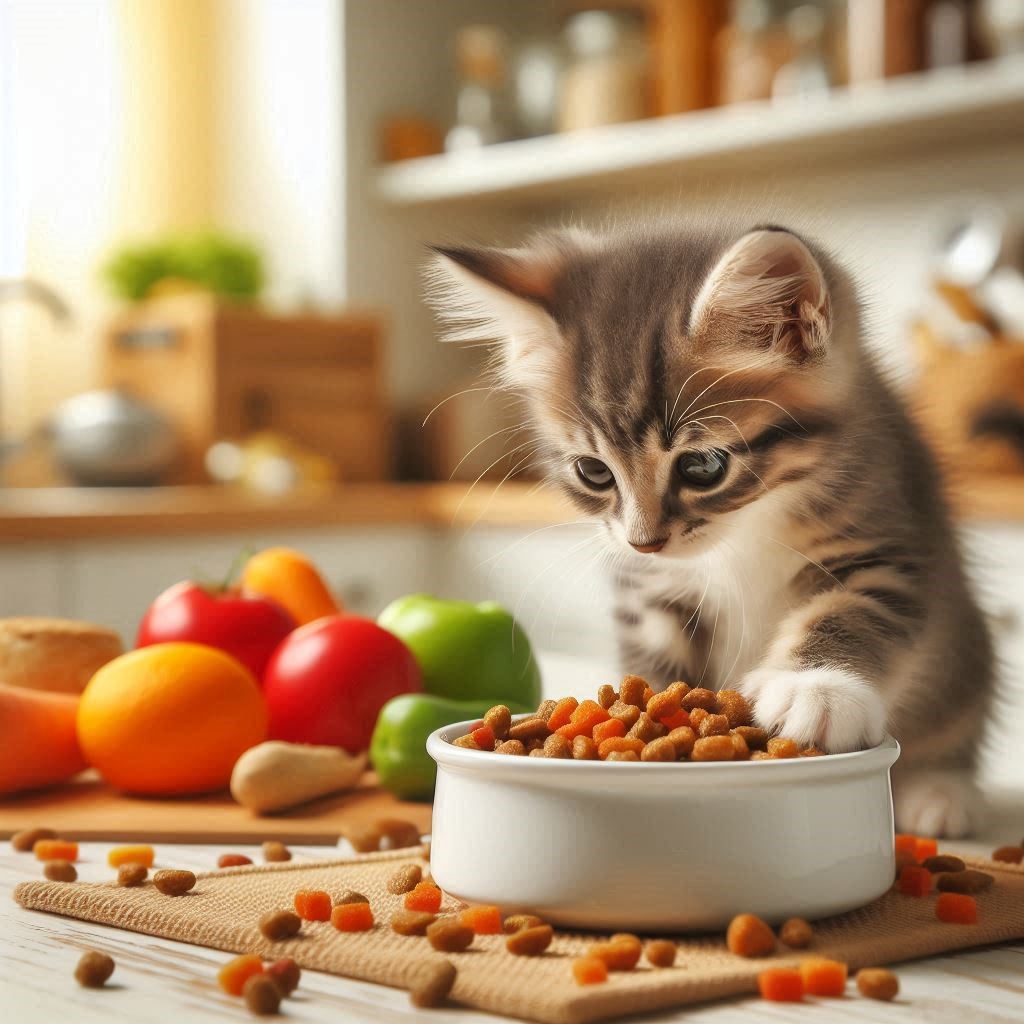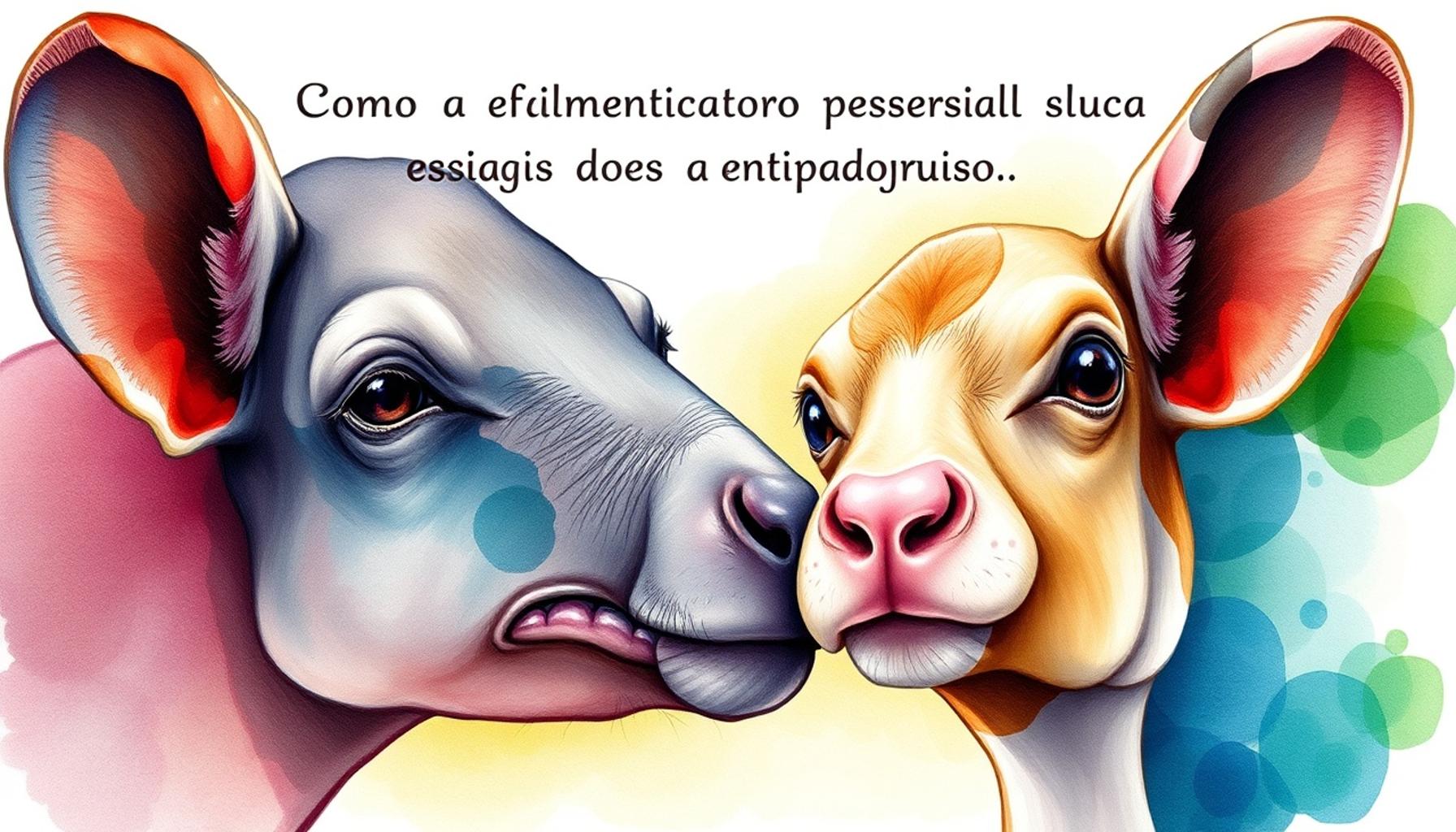Natural Cat Food vs Commercial Kibble Which Is Best for Your Cat

The choice of what to feed our feline friends is crucial for their health and well-being. As pet owners increasingly become aware of the nutritional content of their cats’ diets, the debate between natural food and commercial kibble has gained significant attention. Both options present unique benefits and challenges that can deeply impact a cat’s quality of life.
Understanding the differences can help you make informed choices that align with your cat’s needs. Consider the following key factors:
- Nutritional Value: What nutrients are present in each option?
- Ingredients: Are there any fillers or artificial additives in commercial food?
- Digestibility: Which type is easier for your cat to digest?
- Cost: How do the prices of natural food and kibble compare?
- Long-term Health: What impact does each option have on a cat’s longevity?
This article will guide you through a thorough comparison of natural cat food and commercial kibble, culminating in a ranking of the Top 5 options available today. Stay tuned to discover how to best meet your cat’s dietary needs!
YOU MAY ALSO LIKE: Read this other article
Top 5: Alimentação Natural vs. Ração Comercial – What’s Best for Cats?
Deciding on the best nutrition for our feline friends is a topic that generates avid discussion among pet owners and experts alike. With a myriad of options available, including natural feeding and commercial cat food, it can be confusing to determine which is better for our cats. This article dives into the pros and cons of each method, presenting you with a ranked list from fifth to first, highlighting their unique merits and downsides so you can make an informed decision.

5. Convenience of Commercial Food
Commercial cat food is designed with convenience in mind. With its ready-to-serve nature, it saves pet owners valuable time and effort. It’s easy to store, requires no meal preparation, and can support modern, busy lifestyles. Just imagine coming back after a long day, knowing you don’t have to worry about crafting a balanced meal from scratch.
Moreover, commercial cat food is often formulated with a precise nutritional balance, ensuring that cats receive necessary vitamins and minerals in every meal. Most brands invest heavily in research and development, resulting in dietary products tailored to meet various cat needs, whether they are focused on dental health, weight management, or specific life stages. However, this convenience can come at a price. The necessity to read ingredient lists carefully is paramount, as not all commercial food options are created equal. Some may contain fillers, artificial additives, or low-quality protein sources, which might not be ideal for feline health.
4. Cost-Effectiveness of Commercial Food
When considering budget, commercial cat food generally offers a cost-effective solution. Pet owners can purchase in bulk, taking advantage of economies of scale, and the extensive range of products available makes it accessible for various financial situations. On average, commercial cat food can be less expensive than preparing a natural diet, especially if you have multiple cats to feed.
However, cost should not be the sole factor in your decision. As the price of commercial food drops, there’s often a trade-off in terms of quality. Lower-priced options may lack essential nutrients and contain unhealthy additives, which over time, could contribute to health problems. Consequently, pet owners must weigh the financial savings against the potential long-term health risks of lower-quality foods.
3. Health Considerations of Natural Feeding
Choosing a natural diet opens up an array of opportunities for crafting a fresh and balanced meal plan tailored specifically to your cat’s unique needs. Natural feeding often involves fresh meats, fruits, vegetables, and grains, resulting in a nutrient-dense diet. This fresh-food approach can lead to an improved coat condition, increased energy levels, and generally better health outcomes.
Supporters of natural feeding further argue that such diets can prevent chronic diseases associated with poor nutrition, such as obesity and diabetes. However, the transition to a natural diet can be time-consuming and requires meticulous planning to ensure your feline gets the right balance of nutrients. Veterinary guidance is crucial here to avoid deficiencies, such as taurine, essential amino acids, and fat-soluble vitamins, which are vital for the overall well-being of a cat.
2. Ingredient Transparency
One of the most appealing aspects of natural feeding is the ability to control the ingredients precisely. Pet owners have the freedom to choose high-quality meats without fillers, by-products, or preservatives. This transparency fosters a sense of trust and assurance in the quality of what is being provided to your cat.
This ingredient control allows for a personalized diet that can cater to specific health concerns. For example, if your cat has allergies or sensitivities, you can avoid certain ingredients, leading to better digestive health and fewer skin problems. On the downside, this level of control requires a deeper understanding of feline nutrition. Without this knowledge, owners might inadvertently prepare meals that are nutritionally imbalanced or leave out essential nutrients.
1. Overall Nutritional Value and Health Impact
The debate ultimately revolves around overall nutritional value and long-term health implications. Studies suggest that a well-researched natural diet can lead to fewer health issues and longer lifespans compared to poorly formulated commercial foods. The ability to tailor diets with locally sourced ingredients elevates the nutritional benefits, offering fresher, more nutrient-rich meals.
However, it’s important to acknowledge that premium-quality commercial cat foods, designed by veterinary nutritionists, can also provide excellent nutrition, provided reputable brands are chosen. It’s crucial to seek out balanced diets that meet the AAFCO (Association of American Feed Control Officials) standards when opting for commercial food. Such foods have undergone rigorous testing to ensure they meet the nutritional needs of cats.
Each feeding method has its strengths and challenges, posing a complex question for pet owners. An informed decision based on individual cat needs, lifestyle, and budget is paramount in ensuring your furry friend thrives in optimal health and happiness. The path chosen should be one that aligns with not only practical constraints but also the well-being of your cats, ensuring they receive the best care possible.
| Advantages | Details |
|---|---|
| Diet Control | Natural diets allow for precise control of ingredients and nutritional value, ensuring that each cat receives their specific dietary needs. |
| Freshness | Home-prepared meals are fresh and free from preservatives, which can be harmful in long-term commercial diets. |
| Palatability | Cats often find natural food more appealing due to its aroma and texture compared to processed kibble or canned food. |
| Health Benefits | Natural diets can lead to improved coat condition, better dental health, and lower chances of obesity and other health issues compared to many commercial brands. |
The debate over whether to feed cats natural foods or commercial rations ignites passionate discussions among pet owners. Many cat lovers argue that natural diets are superior, contributing to overall wellbeing. The transparency of ingredients in home-cooked meals typically provides peace of mind for pet owners concerned about what exactly is in their pet’s food. However, it is essential to ensure that a home-prepared diet sufficiently meets a cat’s nutritional requirements. Homemade diets lack the fortification found in most commercial products unless specifically planned, and nutritional imbalances can arise if not carefully managed. This need for balance calls for a partnership between pet owners and veterinary nutritionists to create the most fulfilling diet possible.In contrast, commercial diets offer the convenience of standardized nutrition. Brands undergo rigorous testing to ensure that each package delivers consistent levels of essential nutrients. This can significantly reduce the chance of nutrient deficiency, especially in busy households where time does not allow for meal preparation.Some concerns arise around the long shelf life and extensive processing of commercial foods, as well as the increased presence of artificial additives and fillers. Therefore, the quest for the best diet for cats continues. Pet owners must consider various factors, including lifestyle, health conditions, and personal philosophies regarding pet care. This ongoing exploration will undoubtedly lead to more informed choices tailored to each individual feline friend.
LEARN MORE: This related article may interest you
FAQs: Natural Diet vs. Commercial Food for Cats
What are the main differences between a natural diet and commercial cat food?
The primary distinction lies in the ingredients and processing methods. Natural diets often comprise fresh, whole foods prepared at home or sourced from specialty pet stores and may include raw or lightly cooked meats, vegetables, and grains. In contrast, commercial cat food is processed and typically includes a variety of ingredients such as meats, grains, and additives designed to meet nutritional standards. One key point to consider is that commercial foods are regulated for nutrient balance, while natural diets require careful planning to ensure all nutritional needs are met.
Are there any health benefits to feeding my cat a natural diet?
Advocates of a natural diet suggest that it can lead to multiple health benefits, including improved digestion, healthier skin, and shinier coats. Some believe that a diet closer to what a cat would eat in the wild can enhance overall well-being. However, scientific evidence on long-term benefits is limited, and improper preparation can lead to nutrient deficiencies. It’s crucial to work with a veterinarian to develop a balanced natural diet tailored to your cat’s needs.
Is commercial cat food safe and nutritious for my feline friend?
Commercial cat foods are formulated to provide complete and balanced nutrition, adhering to guidelines set by organizations such as the Association of American Feed Control Officials (AAFCO). These products undergo rigorous testing to ensure safety and nutritional adequacy. For many cat owners, the convenience and reassurance of a regulated food option are significant advantages. Nonetheless, it’s important to choose high-quality brands and avoid ones with excessive fillers and artificial ingredients.
Can I combine natural food with commercial cat food in my cat’s diet?
Many pet owners find a combination of natural and commercial food to be the best of both worlds, offering diversity in taste and texture. This mixed feeding strategy can also optimize nutritional intake, provided it’s done carefully to avoid nutrient imbalances. It’s advisable to consult with a veterinarian to ensure that the diet is properly balanced and to avoid any potential digestive issues that could arise from sudden changes in feeding habits. Monitoring your cat’s health during any dietary transition is crucial.
YOU MAY ALSO LIKE: Read this other article
Conclusion
In the ongoing debate over natural vs. commercial food for cats, both sides offer compelling arguments. On one hand, natural diets, often touted for their wholesome ingredients, align closely with a cat’s ancestral eating patterns. These diets typically contain fewer preservatives and may provide a fresher alternative to processed options. On the other hand, commercial cat food, known for its convenience and consistent nutritional value, has been formulated to meet all feline dietary requirements via rigorously tested ingredients.
Although dogged debates persist, the choice between these diets hinges on several factors worth pondering. Considerations such as a cat’s unique health needs, the owner’s lifestyle or budget, and the importance of maintaining a balanced diet all enter the equation. Moreover, some veterinarians argue that mixing both options—supplementing a commercial diet with fresh, natural ingredients—might offer a balanced compromise.
Ultimately, the decision is guided by each cat’s individual requirements and the owner’s informed judgment. Animal nutrition is a dynamic field with ongoing research and new findings constantly emerging. Therefore, it’s crucial for feline owners to regularly consult veterinary professionals and stay updated with current information when determining the most suitable nutrition regimen.
Final Thoughts
The conversation about what constitutes the best diet for our feline companions continues to evolve. Whether you lean towards a natural approach or trust in commercial formulations, the ultimate goal remains the same: ensuring that your cat enjoys the highest quality of life. Feeding your cat should not only meet their physiological needs but also contribute to their overall well-being and longevity.
For cat owners keen to make the most informed choices, diving deeper into the science behind these options can be beneficial. Exploring the latest studies and engaging with trusted veterinary experts can provide further clarity in navigating the nutritional path ahead, while always bearing in mind that every cat may have unique dietary needs.


